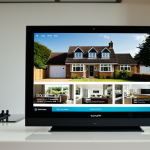Creating an effective video storyboard need not be time-consuming or complex. By breaking down the process into clear, manageable steps and using smart tools and templates, you can map out your scenes with speed and precision. Focus on organizing your visual ideas simply and apply best practices designed to streamline your workflow, helping you deliver a polished storyboard quickly while maintaining clarity and creativity.
Rapid Steps to Building Your Video Storyboard
Before diving into your video storyboard basics, it’s crucial to complete specific preparatory actions. Start by clarifying your video’s main message and target audience. This foundational step eliminates confusion later, ensuring your storyboard remains focused and effective. Next, gather any reference materials—scripts, visual inspirations, or key brand elements—to incorporate consistency throughout the storyboarding process.
Have you seen this : Is the Future of Transportation in the UK Dependent on Technological Innovations?
When considering the storyboarding steps, break the process into manageable phases to streamline progress. First, sketch a rough outline of your key scenes, emphasizing the flow rather than artistic detail. This creates a clear roadmap for your narrative. Then, refine each frame by adding notes on camera angles, movements, and transitions. Keeping these steps distinct helps maintain momentum without getting bogged down in specifics prematurely.
To accelerate speeding up storyboard creation, leverage templates or digital tools that allow easy rearrangement of frames and prompt quick adjustments. Time-saving tips include sketching simple stick figures or shapes to represent characters and settings. This technique prioritizes storytelling over perfection, enabling you to visualize scenes efficiently. Also, set strict time blocks for each phase—allocating, for example, 15 minutes per scene—to maintain steady progress.
Also to read : What are the latest UK technology innovations in artificial intelligence?
By focusing on these fast yet effective storyboarding steps, you can confidently craft a comprehensive video storyboard while saving valuable time. For a practical starting point, consider how to design your video storyboard with helpful tools and frameworks that embrace these tips seamlessly.
Essential Tools and Templates for Fast Storyboarding
Efficient storyboarding hinges on selecting the right storyboard tools and leveraging storyboard templates to maximize pre-production efficiency. Digital tools like dedicated software and apps offer speed through drag-and-drop interfaces, reusable assets, and instant sharing features, making them ideal for tight deadlines. Their ability to integrate with other pre-production software further boosts workflow.
Physical tools, such as printed templates and sketchpads, remain popular for quick conceptualization without screen distractions. Using pre-made storyboard templates simplifies the process by providing structured layouts, allowing creators to focus on narrative flow rather than format. These templates often come in various styles, accommodating diverse project types from commercials to films.
Choosing the right combination depends on project requirements and personal workflow. For example, a live-action short may benefit from detailed digital tools, while an animation concept might move faster with hand-drawn templates. Prioritizing tools that enable rapid revisions and collaboration is crucial when working under tight deadlines.
For those interested in optimizing this process, it’s helpful to design your video storyboard by selecting templates tailored to your project’s scope and timeline. This approach ensures that resources align with your storytelling needs while preserving speed and clarity in pre-production.
Organizing Visual Ideas Effectively
Mastering visual planning is essential to create storyboards that communicate your message crisply and efficiently. Arranging scenes logically while maintaining narrative momentum helps viewers grasp the story without confusion. One of the common challenges in organizing storyboards lies in balancing the level of detail for each frame. Too much detail can slow the pace; too little can obscure the story’s intent.
When tackling storyboard layout tips, it’s vital to focus on clear sequencing. Group related visual elements together to build a coherent flow, allowing the audience to follow along naturally. Structuring your frames to show progressive action or concept development ensures the story grows in engagement and understanding.
Speed and clarity go hand in hand—each frame should convey its message quickly without sacrificing key information. This means emphasizing essential visual cues and minimizing clutter. Employing these principles in your visual planning streamlines the creative process and enhances the storyboard’s impact. For example, starting with broad strokes and then refining details frame-by-frame can save time while retaining narrative cohesion.
To dive deeper into crafting efficient layouts, consider resources that help you design your video storyboard with precision, ensuring each frame builds effectively toward your communication goals.
Best Practices to Speed Up Storyboard Creation
A key factor in achieving efficiency in video planning is mastering storyboarding best practices. One proven shortcut is to establish a clear template or framework before starting. This reduces guesswork and accelerates the storyboarding workflow by offering a consistent structure for each scene’s visuals, dialogue, and actions. Using pre-made assets or simple sketches can also save time versus creating detailed artwork from scratch, especially during initial drafts.
Avoiding common pitfalls like over-detailing early on or attempting to finalize each scene before moving forward ensures that the process remains fluid. Instead, focus on time-saving storyboarding by prioritizing key narrative beats and flow before refining specifics. This approach prevents frequent backtracking and helps maintain momentum.
Incorporating feedback efficiently is crucial as well. Collect all comments and suggestions from stakeholders in one round rather than fragmenting them. Then, batch the revisions together and apply them systematically. This minimizes disruptions and streamlines the iterative process, ultimately speeding up the path to a finalized storyboard.
For professionals seeking to implement these strategies effectively, it’s useful to design your video storyboard with tools that accommodate quick adjustments and enable collaboration. This not only enhances storyboarding best practices but also boosts overall productivity.
Visual Examples and Quick Inspiration Sources
Discovering the right storyboard examples is essential for creating compelling video plans. Quick inspiration can often come from analyzing storyboard references found in industry portfolios, educational sites, or creative communities. These examples showcase diverse approaches—ranging from minimal sketches to detailed frames—and can enrich your understanding of visual storytelling.
When reviewing storyboard examples, focus on how the flow between scenes is designed to maintain viewer engagement and clarity. Extracting techniques such as framing, pacing, and visual emphasis enables rapid adoption of tried-and-tested methods for your own videos. For instance, note how transitions between storyboards can imply motion or highlight key moments without overwhelming the viewer.
Adapting these creative storyboard ideas to your video project means tailoring elements to suit your story’s tone and audience. Rather than copying, use storyboard references as a foundation to experiment with compositions, shot types, and annotations. This customization ensures that the storyboard remains both practical and unique, effectively guiding production.
If you’re looking to speed up your process, consider how quick analysis of storyboard examples can streamline decision-making. Additionally, resources exist to help you design your video storyboard with ease, combining inspiration with operational simplicity. Leveraging these strategies leads to efficient and inspired video creation grounded in solid planning.










